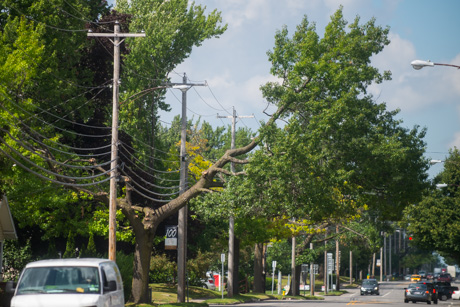National Grid responds to complaints about tree trimming


During public comments at City Council on Monday night, John Roach used words like "mangled" and "butchered" when talking about some of the tree trimming along power line routes in the city.
We asked Steve Brady, spokesman for National Grid, about the tree trimming, and here's his statement:
"We appreciate the concerns homeowners have when it is necessary for us to prune trees, and we work hard to maintain a balance between safety and reliability, and aesthetics. The work we are doing in Batavia, and specifically Oak Street, is no different than forestry work we do all across our service area. The primary purpose is safety, for the public and our crews. It is also a reliability issue, as trees pose the biggest threat to service, especially in bad weather.
"We prune trees to certain specifications depending on the configuration and voltage of the lines. In this case, our standards generally call for clearances of 6 to 10 feet horizontally in either direction, and 10 to 15 feet above and below, again depending on locale, voltage and so on. We work in communities on 5 to 7 year cycles, as we have found that – on average -- pruning on that cycle keeps up with tree growth fairly well.
"National Grid’s pruning practices were developed with the U.S. Forest Service and endorsed by the International Society of Arborculture, the National Arbor Day Foundation and other tree care professionals. Since 2000, the National Arbor Day Foundation has annually recognized National Grid as a “Tree Line USA” utility, one of a select group of utilities to earn this honor.
"National Grid offers a program called '10,000 Trees' that provides grants to municipalities encouraging them to plant low-growing varieties of trees that pose a lesser safety concern to our lines. The City of Batavia has participated in the program since 2007. We also make information available to customers regarding tree trimming, customer responsibilities and advice on what and where to plant. A link to it is here: https://www1.nationalgridus.com/ElectricSafety

Sometimes the tree trimming produces quasi works of art, as with this nearly heart-shaped pair of trees on Pearl Street Road.
One possible solution for "mangled" trees, as well as a way to reduce storm-related power outages is the undergrounding of utilities.
